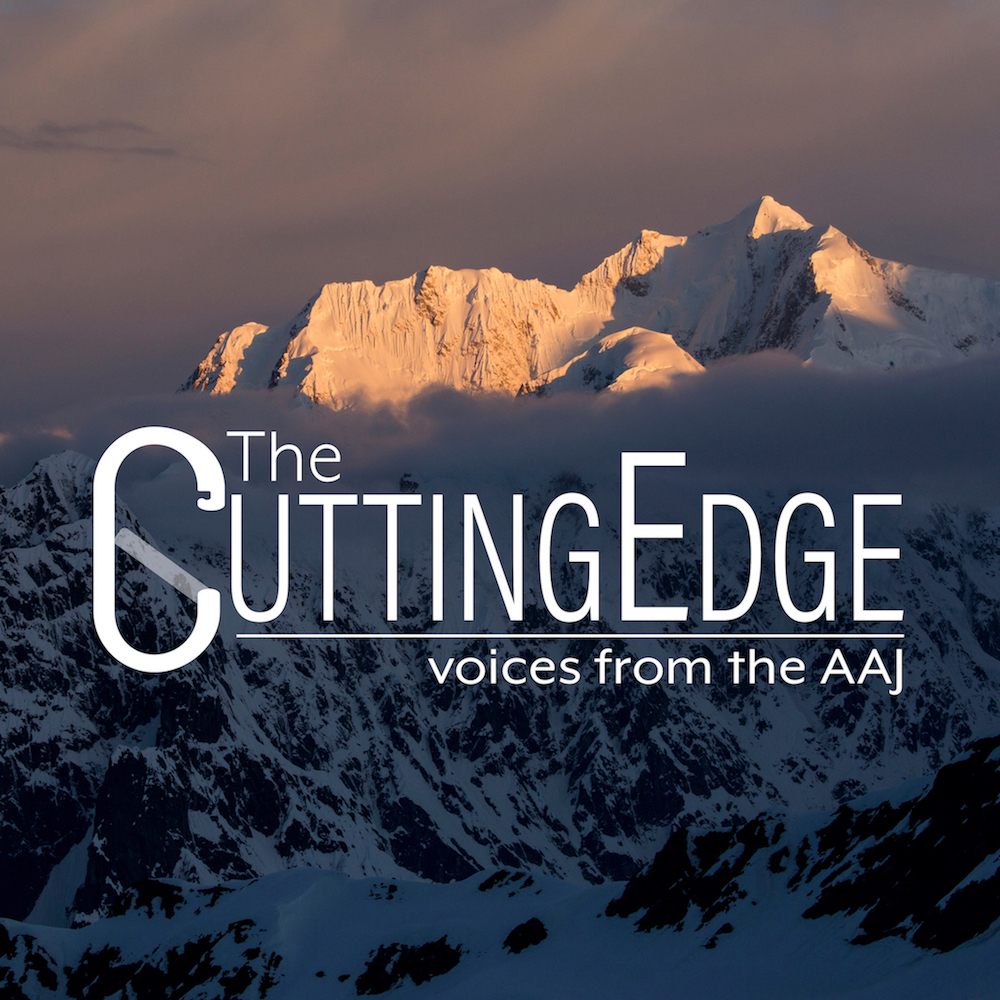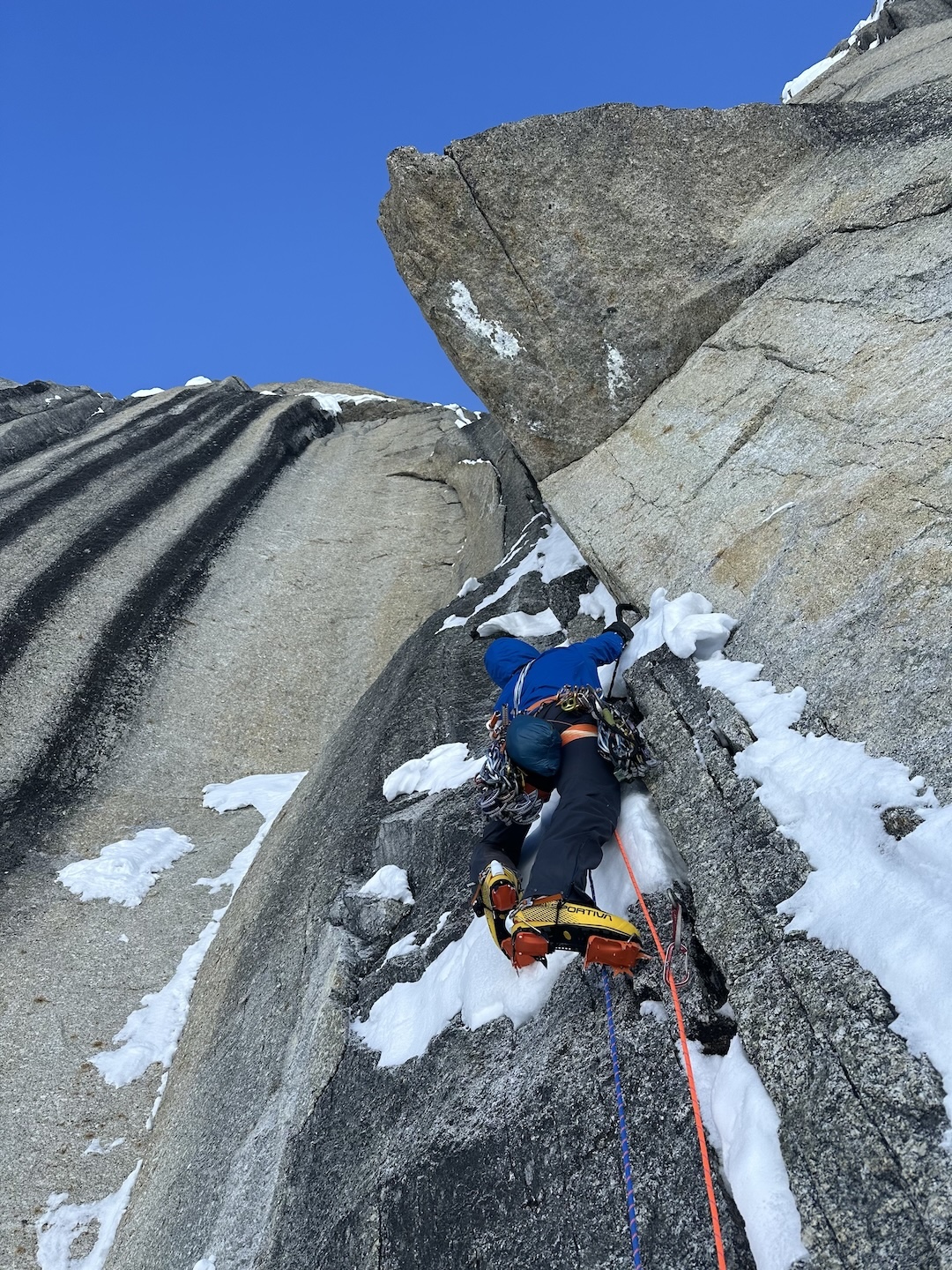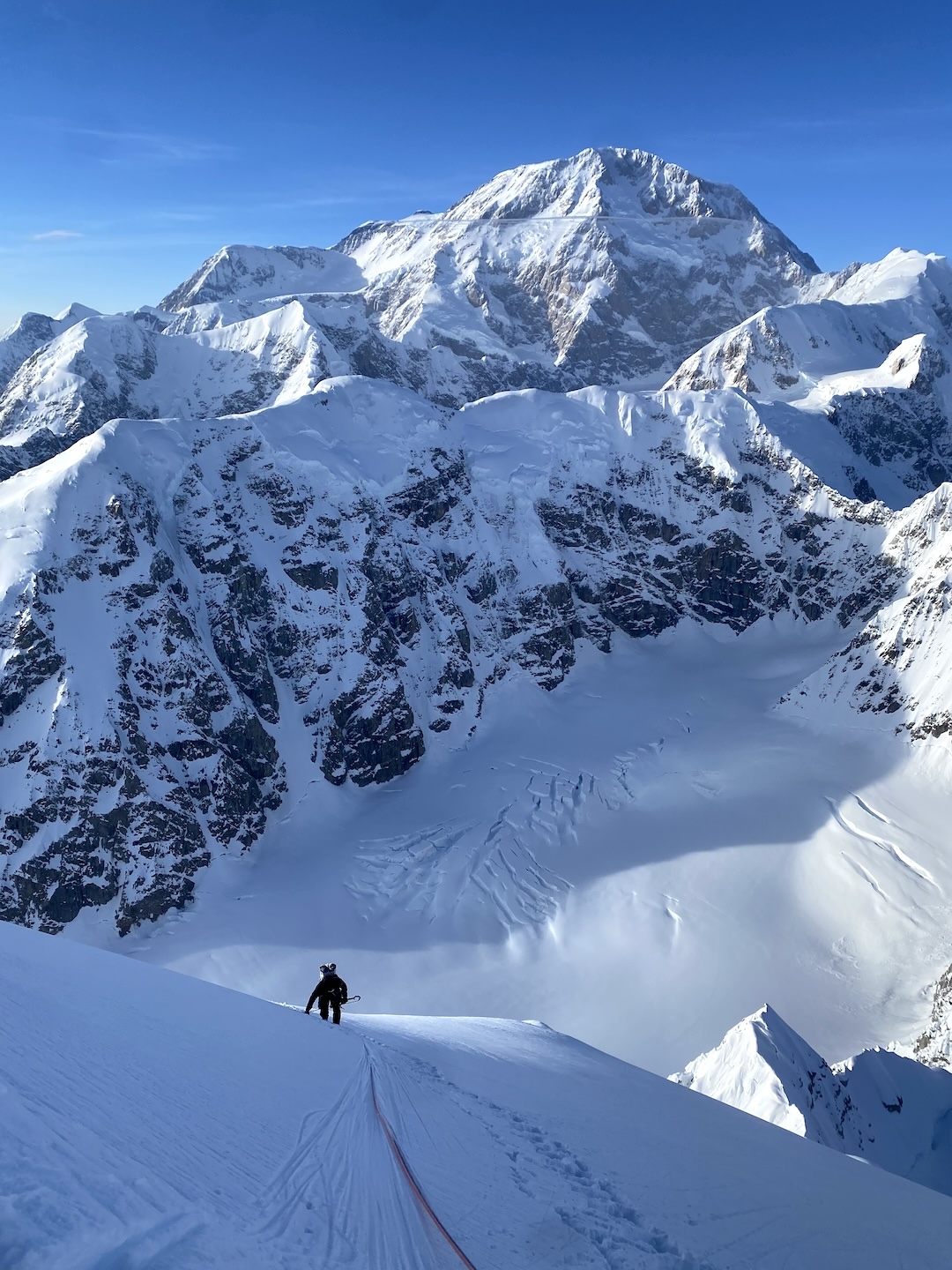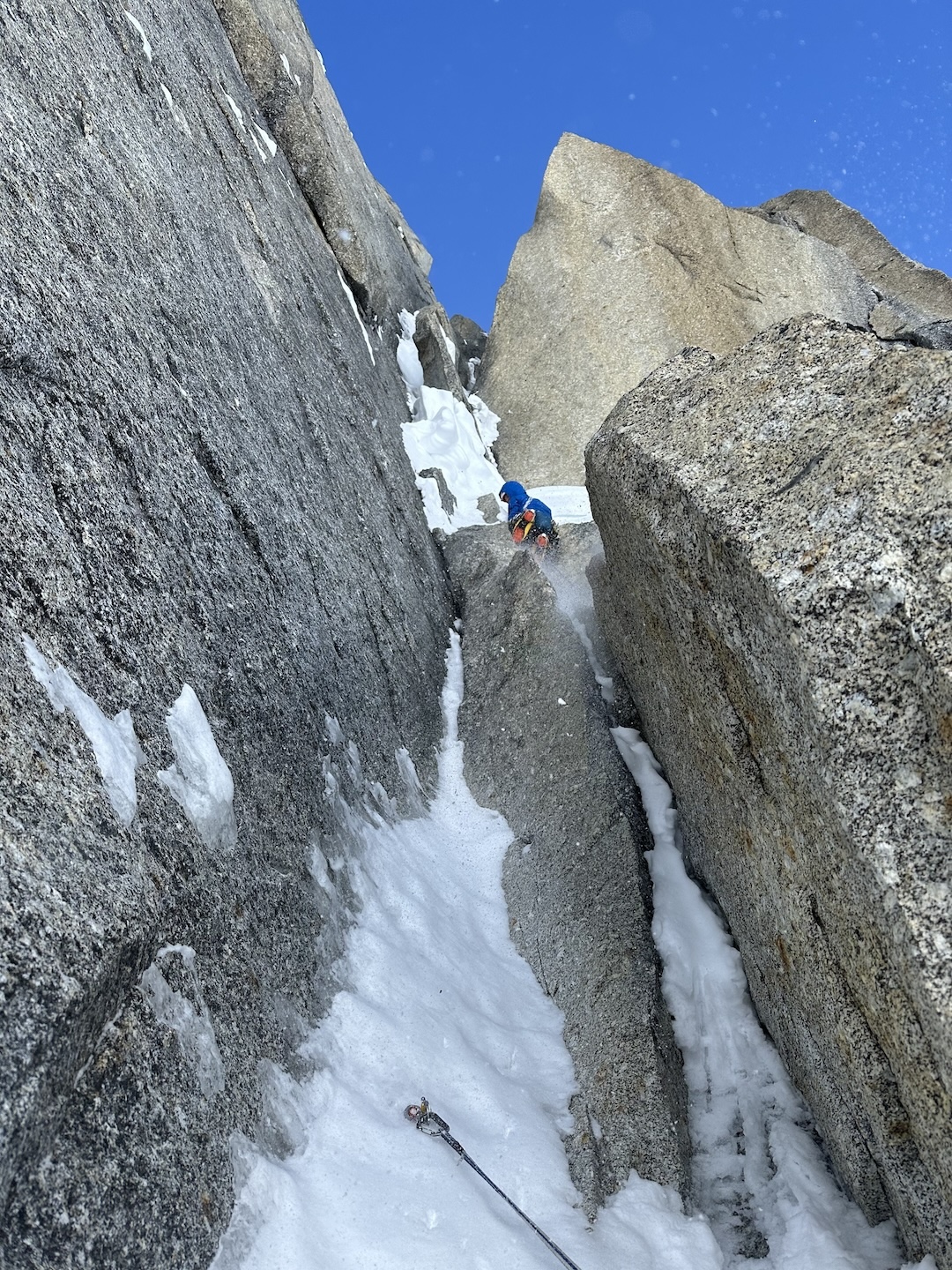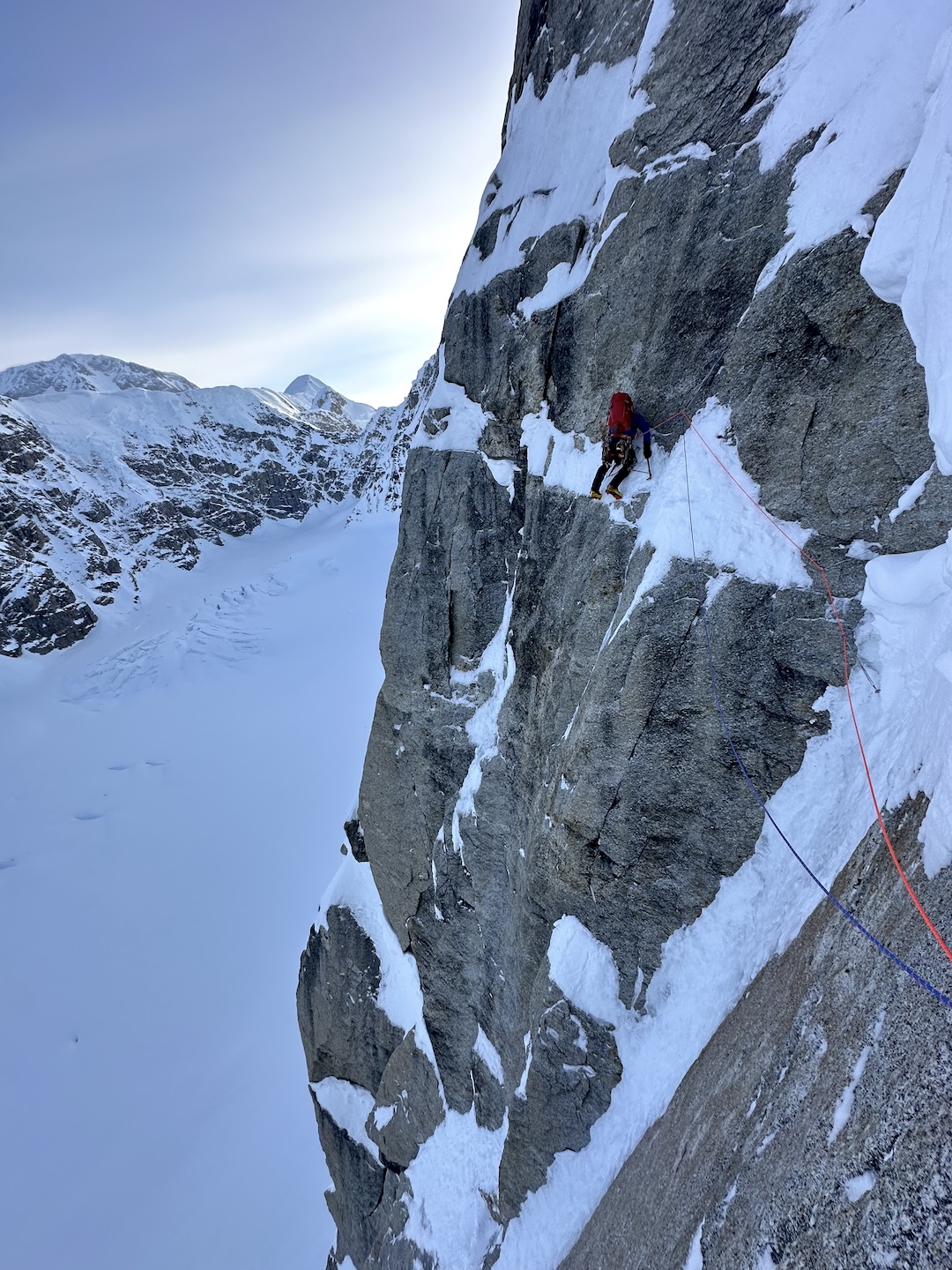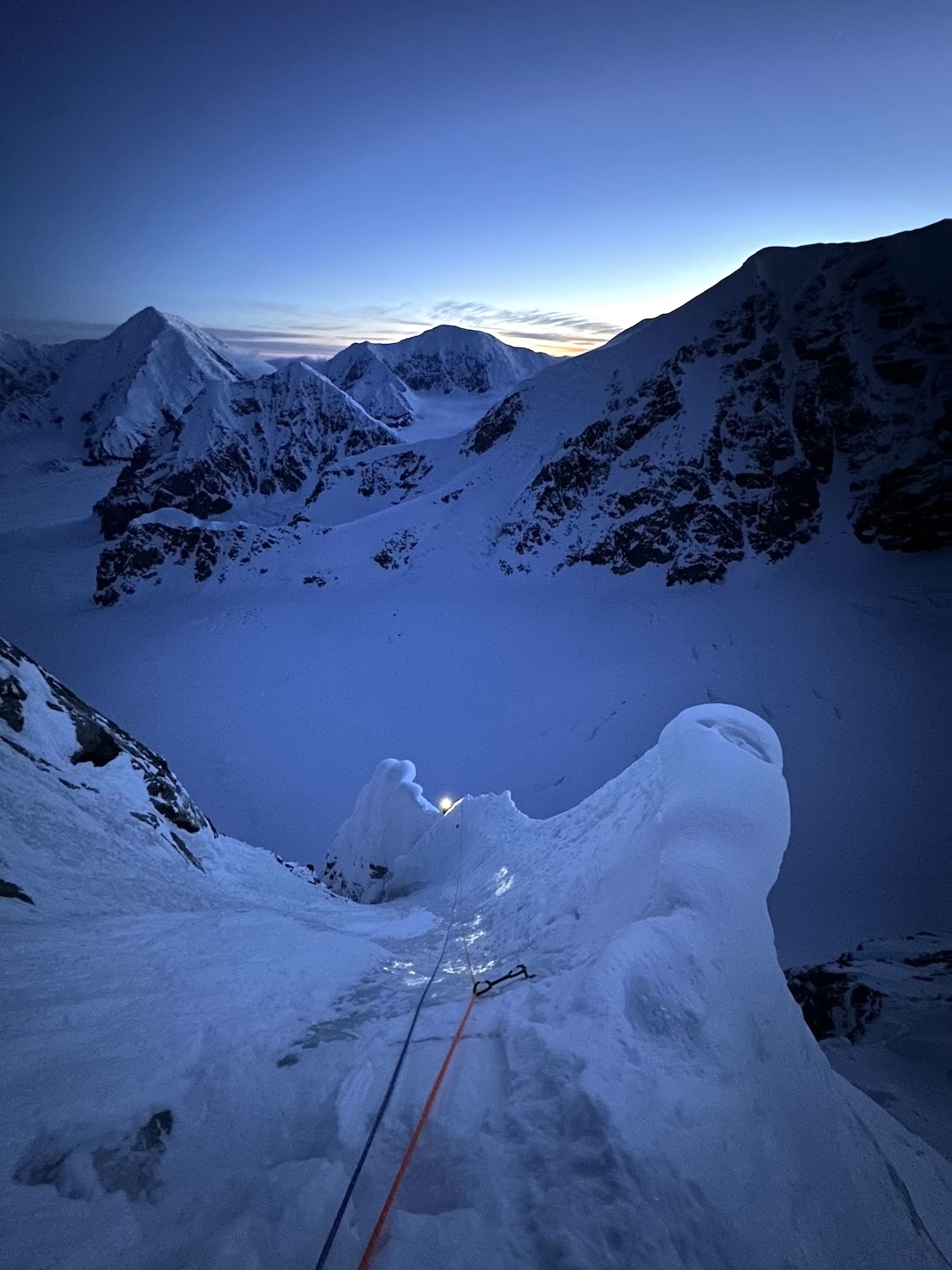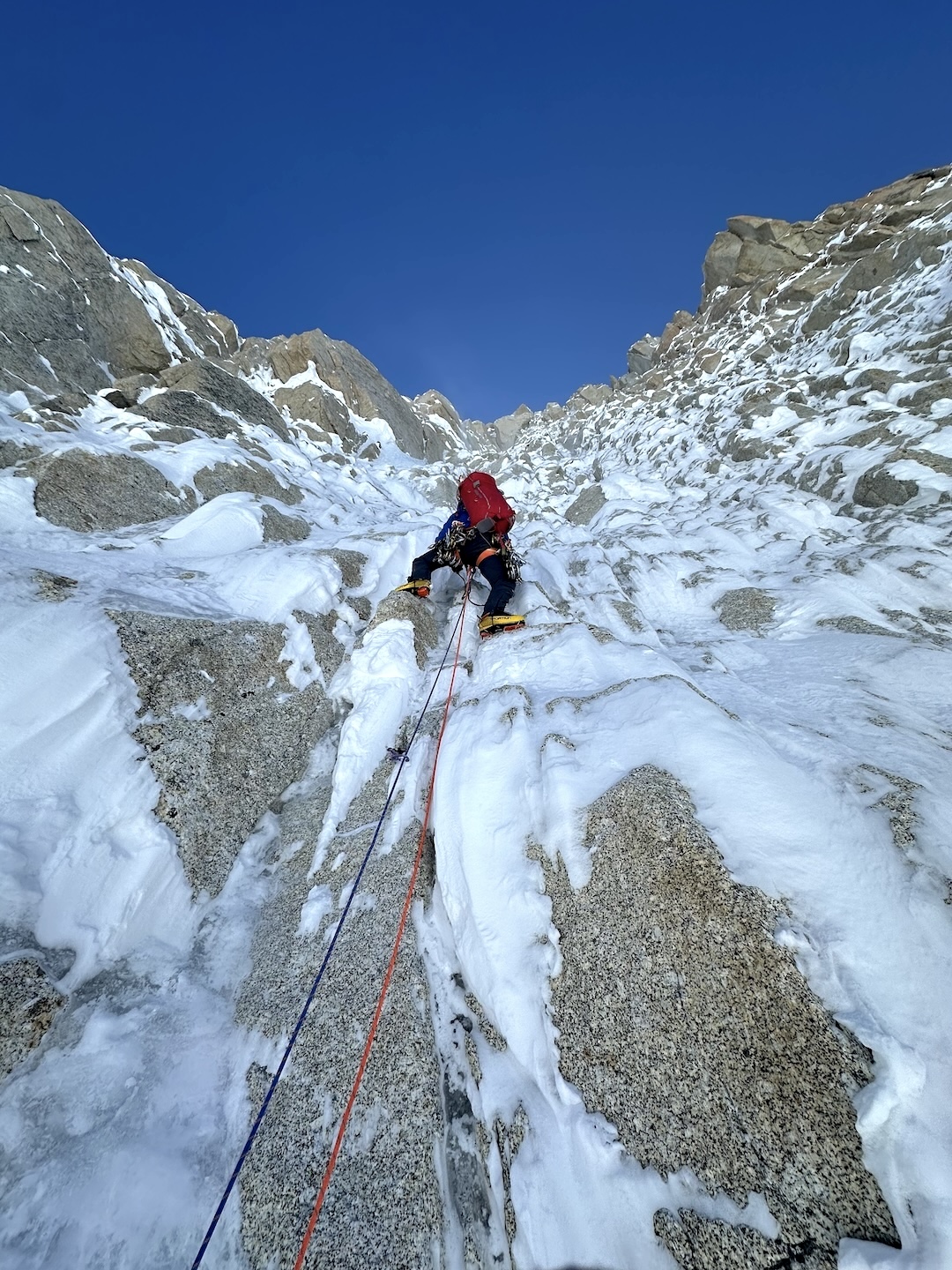Begguya, North Buttress, In the Shadow of the Wall
Alaska, Central Alaska Range
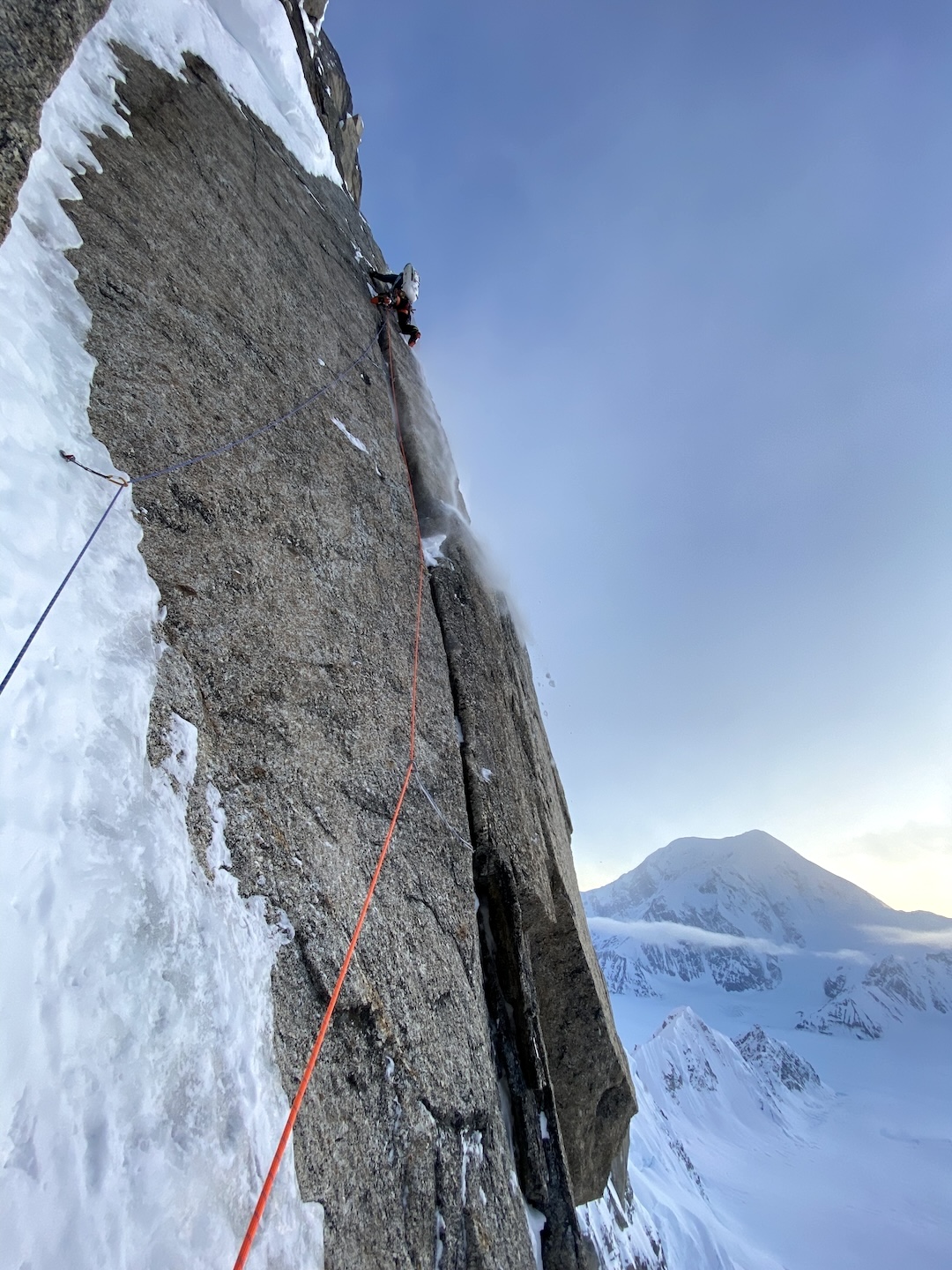
The last 100m had been the wildest alpine climbing I’d ever done: splitter cracks, verglassed offwidths, pumpy roofs, overhanging ice runnels, and big, scary snow mushrooms. A crux sequence had required reaching a full arm’s length to my left off an icy chicken wing into a stein-pull, then swinging onto it. I leaned back to feel the sun’s warmth on my face, the first comfort of the day on the north buttress of Begguya (Mt. Hunter), where Cody Winckler and I were finally starting to believe our new route might actually go.
We’d spent the last three weeks trying and failing to climb big faces above the Buckskin Glacier. A nearly record-breaking winter of snow made for very white walls: Roaring avalanches and collapsing mushrooms had sent us running from the east face of the Mooses Tooth, twice, with our tails between our legs. Badly core-shot ropes turned us around partway up a new line on the north face of Broken Tooth.
Now we were 400m up an untouched triangular shield of ice-streaked granite on Begguya’s north buttress, left of the French Route (Grison-Tedeschi, 1984)—a striking ice couloir leading into a formidable final headwall—and the Wall of Shadows on Hunter’s north buttress. It seemed we’d finally found good conditions. But was it too late?
During one of the crux “Shroom Tube” pitches that had brought us into the sun, I managed to send a medium-sized mushroom down on Cody, who was hiding beneath our backpacks at the belay. As we looked up at another swollen, evil-looking mushroom blocking our path a couple of pitches higher, we knew we couldn’t risk waking that beast. To skirt around it, Cody started up a splitter crack on the right wall of the golden dihedral we had been following. He managed to free the pitch, but as the sun set the crack ended beneath a sea of blank stone. Out left was a narrow ledge that might provide passage around the shroom—but that was a problem for the next day.
Cody found a coffin-sized bivy for one in a horizontal chimney next to the anchor he’d arranged, and as I—still at the lower belay—began to brew up, he fixed the ropes and rappelled down. We ate and drank as snow began to fall, then Cody jugged back up to his coffin and I settled the back half of my butt onto the pitiful ledge I’d managed to excavate from thin ice.
After a mercifully short night, I jugged up to Cody, and from his high point, a pendulum and an exciting traverse left and then back right, above the mushroom, brought us into a perfect ice runnel. Higher, a couple of tenuous mixed pitches led to a dragon’s spine of ice and gargoyles of snow that we followed to the top of the triangular shield and the junction with the French Route—still 600m shy of the top of the north buttress, our intended summit. With the weather shutting down, we knew we would go no higher on this attempt. But having climbed 600m of new terrain, we had solved the big question mark of the route. We started down the French couloir as it began to wash with spindrift, desperately hoping we’d get a chance to take the line to the top of the buttress.
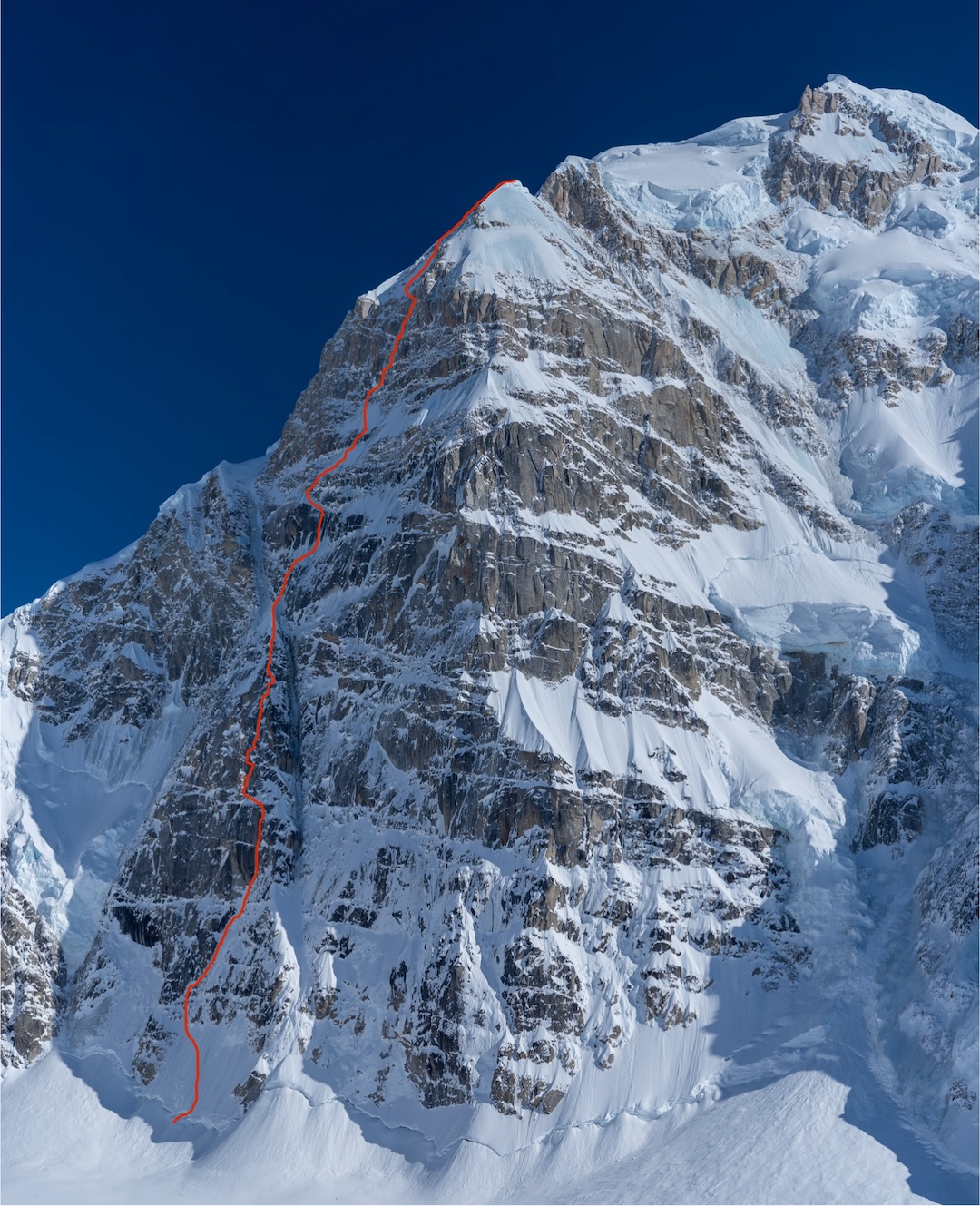
Back on the glacier, our chances didn’t look good; the one window that came was too short, so we climbed the Dempster-Wilson (2,300', V M7 AI6, 2008) on the Mini-Moonflower in an 18-hour push. Finally, two weeks after that first attempt on the north buttress and with only five days left before I had to fly home, the skies cleared. The good weather wasn’t forecast to last: A single push it would have to be.
We simuled across the ’schrund at 8 a.m. on May 14 and continued up névé-streaked slabs to the crux rock band. By 1 p.m., Cody had led us through the Shroom Tubes, this time dislodging a snow mushroom on me at the “Friendly Fire” belay, right where I’d hit him two weeks earlier. Now that we knew the way, we were able to eliminate our one point of aid from the previous attempt. At 8 p.m., we stopped at a nice butt ledge in the warmth of the evening sun, a couple of pitches higher than our previous bivy. We ate, drank, and dozed for an hour until the sun set and the cold started to sink in, then we continued climbing.
We reached the top of the lower shield in the long Alaskan twilight, and at 4 a.m., Cody pulled his sleeping bag around his shoulders as I started up ice runnels above the French couloir—finally on previously climbed terrain. Around dawn, we chopped another butt ledge into the ice beneath the headwall above; we were exhausted after 24 hours on the go, and it didn’t take long to doze off with our feet dangling above the cloud-filled Southeast Fork 1,000m below. The roller-coaster ride was only just beginning though.
When we resumed climbing again an hour later, the singular, icy weakness in the headwall ended after a pitch and a half. The way forward was anything but obvious. I picked my way right, then up, then left, and back right some more, tick-tacking along tiny veins of ice, inching upward toward two widely spaced granite towers that stood at the top of the headwall like goalposts.
At 9 p.m. we crawled into the Cornice Bivy—a narrow crevasse atop the north buttress, historically considered the “summit” of the buttress, though still far from the summit of Begguya. We had completed our new route, In the Shadow of the Wall (1,200m, AI6 M7), with 600m of new terrain and 600m on the French Route. When we arrived, we had crystal-clear views of the entire 3,000m south face of Denali. An hour later, after we’d recuperated as best we could, the upper half of the face was gone, shrouded in clouds. It was time to go.
And so the rollercoaster ride continued. Two hundred meters down the Bibler-Klewin, both of us now in the deepest state of depletion we had ever experienced, we got lost. And then the clouds closed in around us. A long leftward traverse brought us back onto the Bibler-Klewin and we resumed our descent. As I drilled one of dozens of Abalakov threads, I heard a hummm ring through the air. A plane—and close! But Talkeetna Air Taxi never flies at night, I thought. I stopped working on the anchor for a moment to focus on the sound, but it was gone. As soon as I went back to drilling, it returned. The phantom plane followed me the rest of the way down.
After a few unplanned micro-naps at anchors along the way, the 28th rappel brought us over the ‘schrund. We stumbled down the snow cone, and at 8 a.m. on May 16 we reached our skis, 48 (mostly) sleepless hours after we’d left them.
The ski back to base camp felt like a dream, everything whizzing by in a trippy, blurred clarity. When we arrived, we dropped our bags, found that most of our friends had flown out the day before, and skied down the hill to check in with Gabby, the base camp manager.
Standing there, mesmerized by the sights and sounds of other humans, broken bits of our story began to trickle out. But then, something came out of Cody’s mouth that I never could have foreseen. “Once darkness fell on the way down,” he told Gabby and I, “I started hearing a plane that wasn’t there.” The phantom plane had been following him, too.
—Dane Steadman

